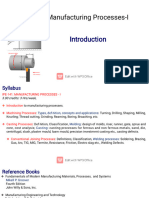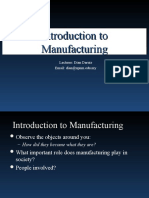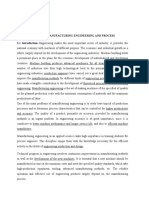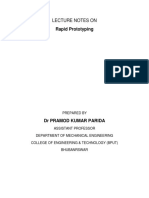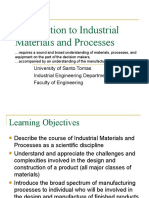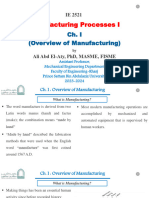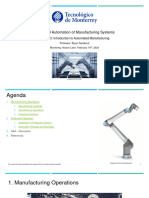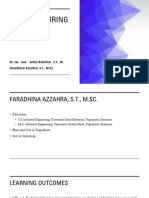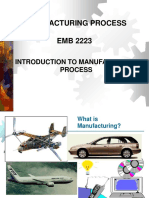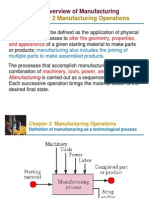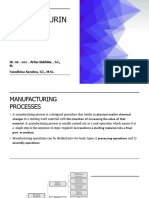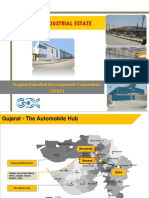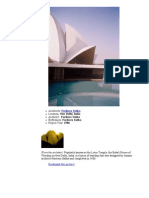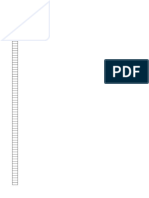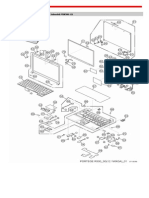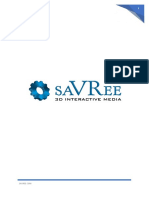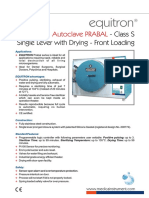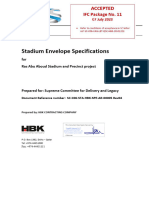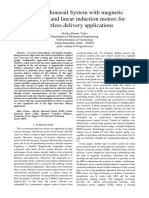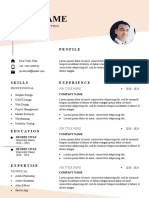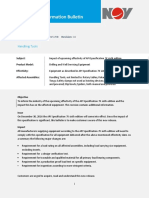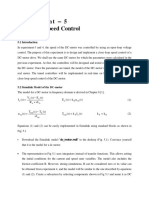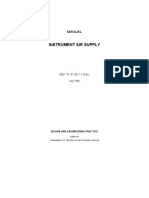0% found this document useful (0 votes)
73 views45 pagesLecture One Introduction To Manufacturing Technology
The document outlines the course MEE 315: Manufacturing Technology, focusing on subtractive operations and various manufacturing processes including casting, machining, and joining. It discusses the importance of plant layout, production systems, and the classification of manufacturing processes, highlighting their applications and advantages. Additionally, it emphasizes the necessity and objectives of an effective plant layout to improve efficiency and reduce costs in manufacturing operations.
Uploaded by
temidabiri21Copyright
© © All Rights Reserved
We take content rights seriously. If you suspect this is your content, claim it here.
Available Formats
Download as PDF, TXT or read online on Scribd
0% found this document useful (0 votes)
73 views45 pagesLecture One Introduction To Manufacturing Technology
The document outlines the course MEE 315: Manufacturing Technology, focusing on subtractive operations and various manufacturing processes including casting, machining, and joining. It discusses the importance of plant layout, production systems, and the classification of manufacturing processes, highlighting their applications and advantages. Additionally, it emphasizes the necessity and objectives of an effective plant layout to improve efficiency and reduce costs in manufacturing operations.
Uploaded by
temidabiri21Copyright
© © All Rights Reserved
We take content rights seriously. If you suspect this is your content, claim it here.
Available Formats
Download as PDF, TXT or read online on Scribd
/ 45














